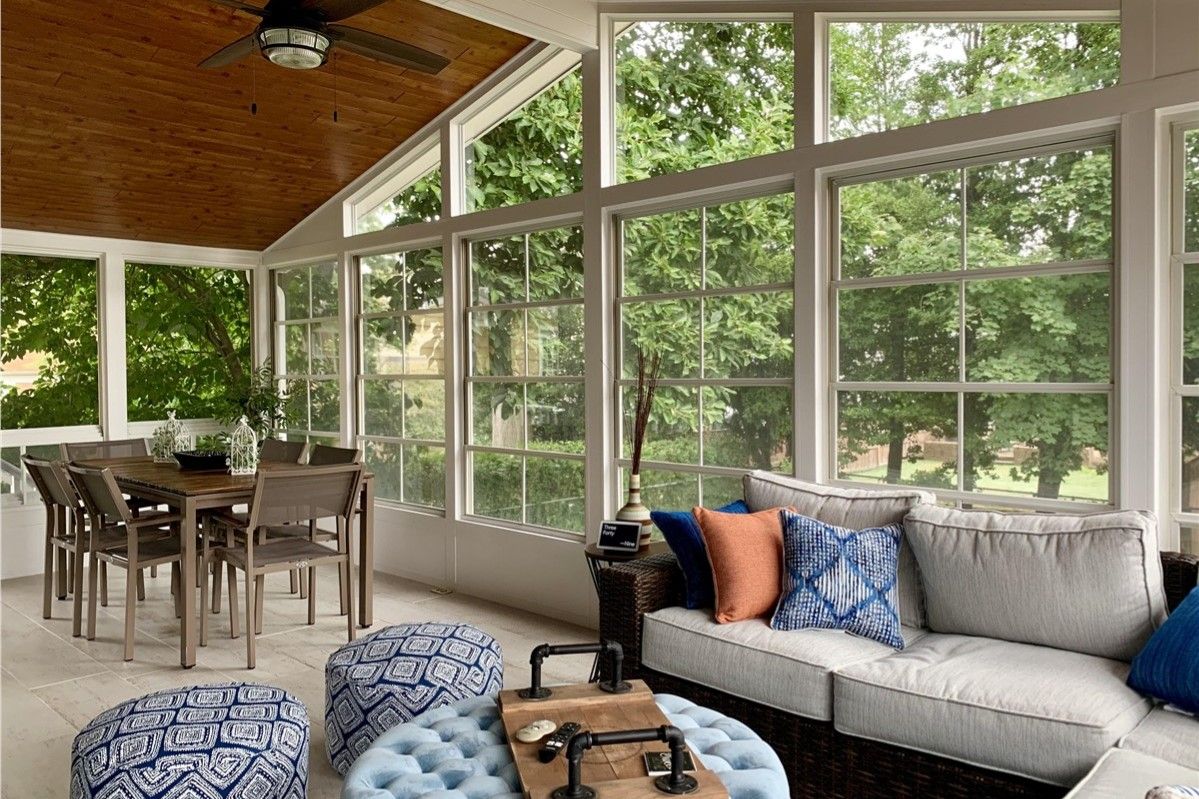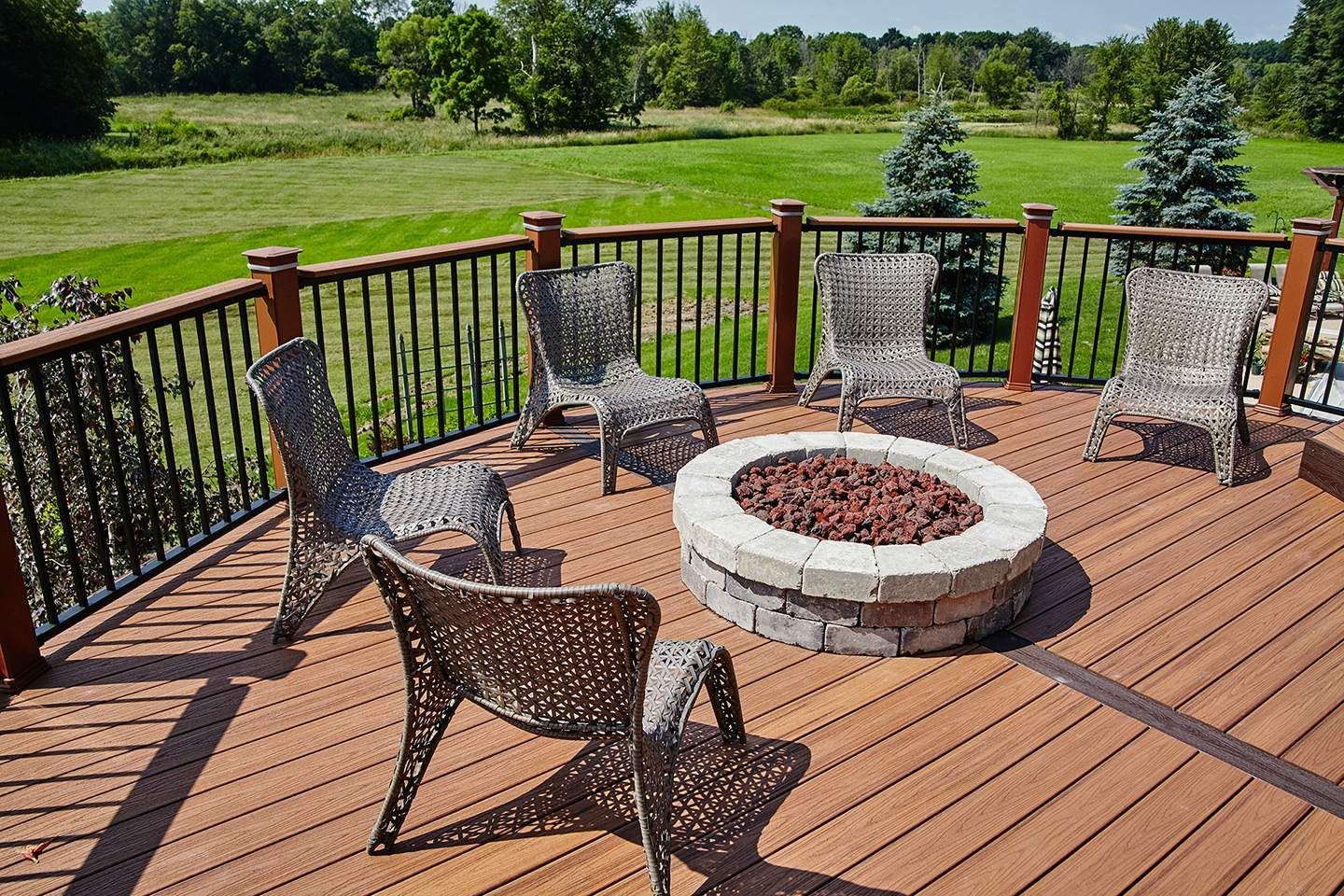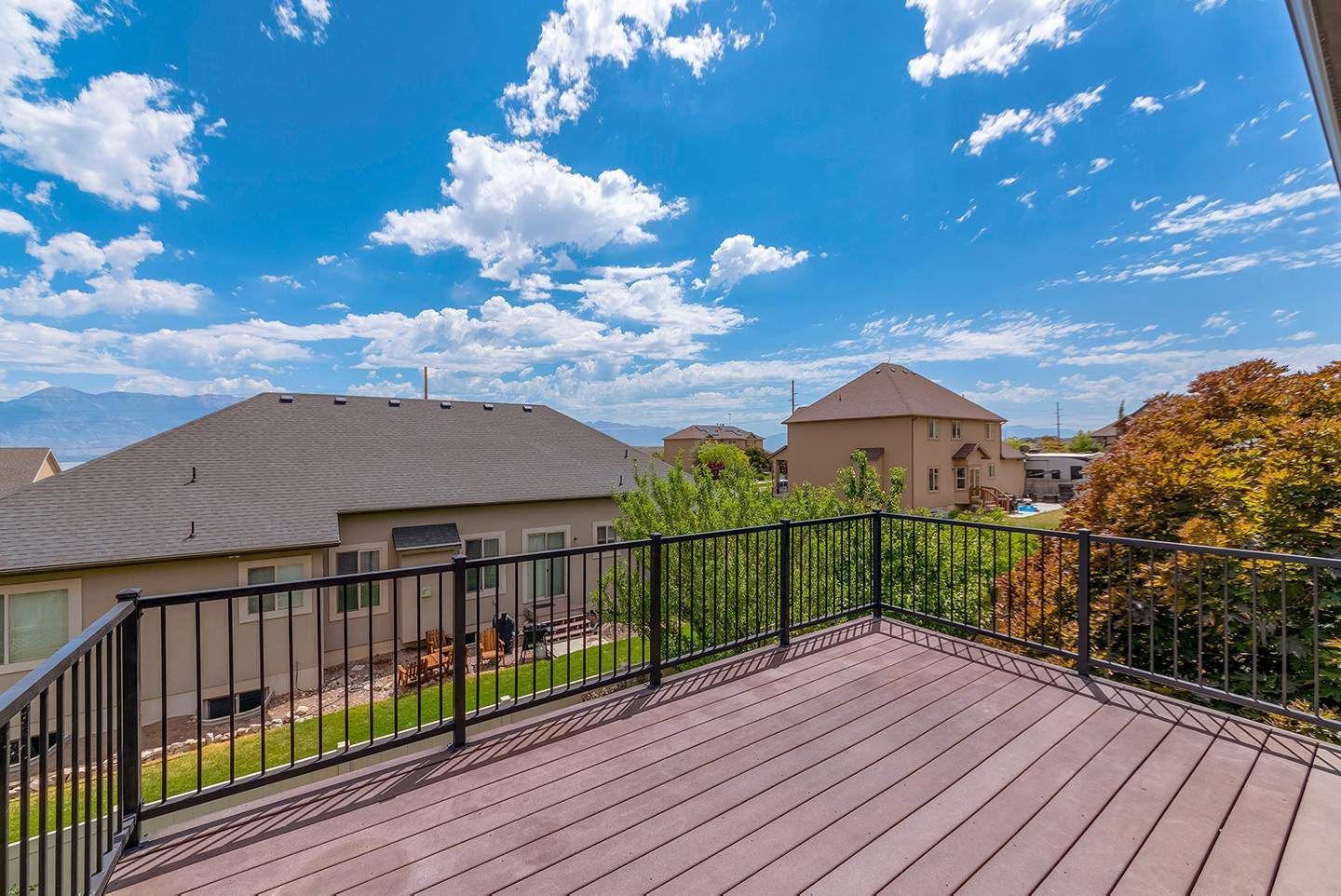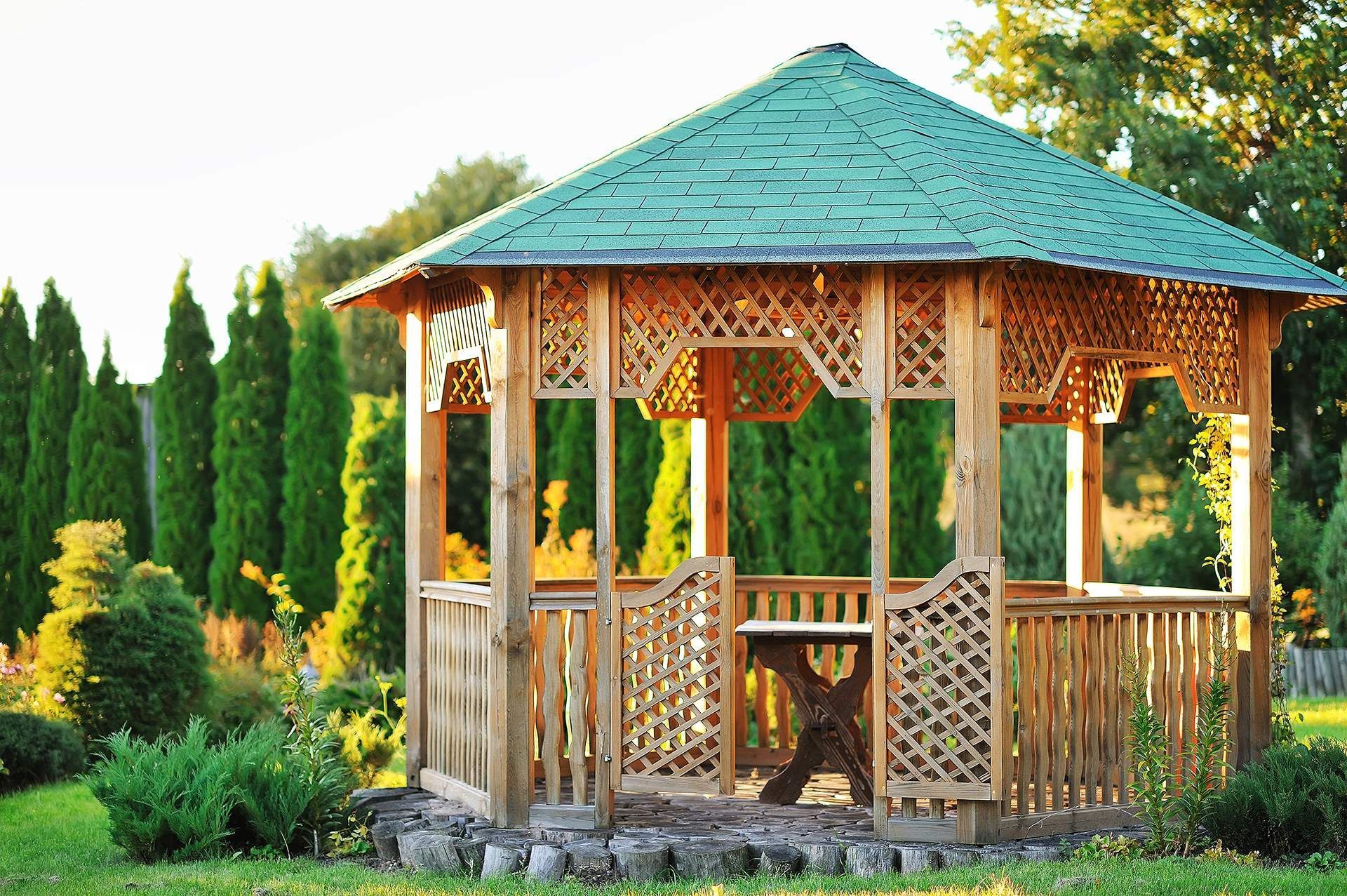Four-Season vs. Three-Season Sunroom Installation: Which One Should You Choose?

Key Differences Between a Four-Season Sunroom and a Three-Season Sunroom
Both sunrooms provide a bright and airy retreat, but they serve different purposes. Here’s a breakdown of what sets them apart:
1. Year-Round Comfort vs. Seasonal Use
A four-season sunroom is designed for year-round use. It has advanced insulation, double- or triple-pane windows, and a built-in sunroom climate control system. This ensures comfortable temperatures, even in extreme weather.
A three-season sunroom, on the other hand, is best for mild seasons like spring, summer, and fall. It doesn’t have the same level of insulation or heating and cooling options, so it may be too cold in winter and too hot during peak summer months.
2. Insulation and Construction Materials
A four-season sunroom is built with high-quality materials that provide superior insulation. Common features include:
- Double-pane or triple-pane windows with low-emissivity (Low-E) coating
- Thick, insulated walls and roofing materials
- Energy-efficient heating and cooling systems
A three-season sunroom is more budget-friendly but lacks full insulation. It typically includes:
- Single-pane or basic double-pane windows
- Less insulation in walls and ceilings
- Optional ceiling fans or portable heating units for mild temperature control
3. Sunroom Climate Control and Energy Efficiency
If controlling indoor temperatures is a priority, a four-season sunroom is the better choice. With a proper sunroom climate control system, homeowners can adjust heating and cooling just like any other room in the house. This prevents excessive humidity and condensation, making the space comfortable in all seasons.
A three-season sunroom relies more on natural ventilation and temporary heating or cooling solutions. This means homeowners might experience temperature fluctuations depending on the time of year.
4. Cost and Budget Considerations
Budget plays a big role in choosing between a four-season sunroom and a three-season sunroom.
- Four-season sunroom: Higher cost due to advanced materials, insulation, and integrated HVAC systems. The investment is worthwhile for those who want a fully functional living space all year long.
- Three-season sunroom: More affordable because it uses lighter materials and doesn’t require full insulation. This is a great option for homeowners who want additional space without the higher price tag.
While a four-season sunroom has a higher upfront cost, it can increase home value significantly. A three-season sunroom is a cost-effective way to expand living space without major renovations.
Choosing the Best Sunroom for Your Lifestyle
When a Four-Season Sunroom is the Best Option
A four-season sunroom is ideal for homeowners who:
- Want a space that can be used during all four seasons
- Prefer a temperature-controlled environment
- Plan to use the sunroom as an extension of their main living space
- Are looking to add significant resale value to their home
Because it’s fully insulated and connected to the home’s HVAC system, a four-season sunroom functions like any other interior room. It can be used as a home office, dining area, or even a secondary living room.
When a Three-Season Sunroom is the Best Option
A three-season sunroom is perfect for those who:
- Want an affordable way to expand their home
- Only need a sunroom during mild weather months
- Prefer natural ventilation over full climate control
- Are looking for a quicker, more cost-effective installation
This type of sunroom is great for relaxing, entertaining guests, or simply enjoying a beautiful backyard view without exposure to direct sunlight or rain.
Additional Factors to Consider Before Installation
Permits and Local Building Codes
Before moving forward with a sunroom installation, it’s important to check local building codes and permit requirements. A four-season sunroom may require additional approvals because it involves HVAC modifications and insulation.
Customization and Design Options
Both four-season sunrooms and three-season sunrooms can be customized to match a home’s style. Homeowners can choose:
- Window styles (floor-to-ceiling glass, sliding doors, or traditional windows)
- Flooring materials (tile, hardwood, or composite decking)
- Roof types (glass, polycarbonate, or insulated solid panels)
Maintenance and Long-Term Care
Regardless of the type, regular maintenance keeps a sunroom looking great for years to come. Some maintenance tasks include:
- Cleaning windows and screens to maintain clarity and airflow
- Checking seals and weatherstripping for air leaks
- Inspecting the roof for any signs of wear and tear
- Keeping the sunroom climate control system in good working order (if applicable)
Making the Right Investment for Your Home
Choosing between a four-season sunroom and a three-season sunroom ultimately depends on how you plan to use the space. If year-round comfort and energy efficiency are a priority, a four-season sunroom is worth the investment. However, if budget and seasonal enjoyment are the main concerns, a three-season sunroom is a practical choice.
No matter which option you choose, a professionally installed sunroom adds beauty, functionality, and value to your home. At Lakeside Deck Builders, we specialize in high-quality sunroom installations tailored to your needs.
Ready to Enhance Your Home with a Sunroom?
If you're thinking about installing a four-season sunroom or a three-season sunroom, our team at Lakeside Deck Builders is here to help. Contact us today for expert guidance on design, pricing, and installation.
Frequently Asked Questions
1. What is the difference between a four-season sunroom and a three-season sunroom?
A four-season sunroom is designed for year-round use with high-quality insulation, double- or triple-pane windows, and a built-in sunroom climate control system. It stays warm in winter and cool in summer, just like the rest of your home. A three-season sunroom, on the other hand, is meant for use in spring, summer, and fall. It lacks full insulation and climate control, making it less comfortable in extreme temperatures.
2. Does a four-season sunroom increase home value?
Yes! A four-season sunroom adds valuable living space to your home and increases its market value. Since it is fully insulated and integrated into the home’s HVAC system, it functions as an additional room, making it more appealing to potential buyers. In contrast, a three-season sunroom offers a beautiful retreat but does not have the same impact on resale value due to its limited usability in colder months.
3. How does sunroom climate control work in a four-season sunroom?
A four-season sunroom is connected to the home’s existing HVAC system or equipped with independent heating and cooling units, such as ductless mini-splits. This ensures a comfortable temperature throughout the year. A three-season sunroom typically relies on ceiling fans, space heaters, or portable AC units, but it does not have built-in sunroom climate control, making it less effective in extreme weather.
4. Is a three-season sunroom more affordable than a four-season sunroom?
Yes, a three-season sunroom is a more budget-friendly option because it requires fewer materials, less insulation, and no permanent HVAC connection. It is a great choice for homeowners who want additional space for relaxation without the higher costs of a four-season sunroom, which includes advanced insulation and climate control features.
5. Which sunroom option is best for year-round use?
If you want a comfortable space in all seasons, a four-season sunroom is the best choice. Its insulation, energy-efficient windows, and sunroom climate control system ensure a stable indoor temperature, making it functional throughout the year. A three-season sunroom is ideal for those who only need a sunroom during milder months and prefer a more cost-effective installation.



